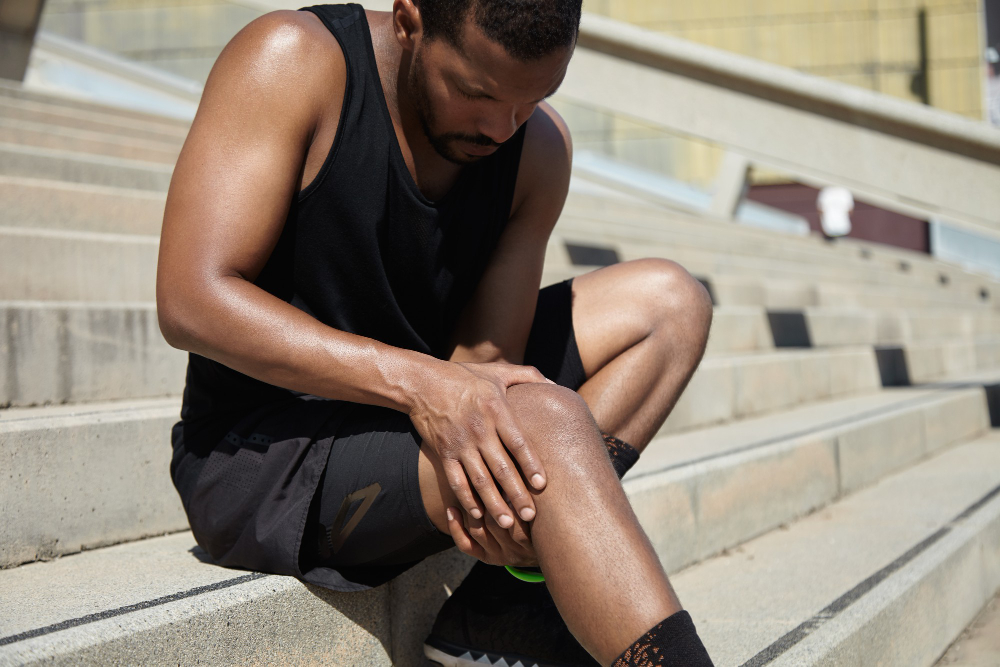
Participating in sports and physical activities is a vital part of a healthy lifestyle, but the risk of injury is an inherent aspect that athletes should be vigilant about. One specific – and quite common – athletic injury is the tear or strain of the anterior cruciate ligament, better known as the ACL. This injury can significantly impact an athlete's ability to compete and lead to long-term health concerns if not managed properly.
In this comprehensive guide, we'll discuss proven strategies to prevent ACL injuries before they sideline your athletic aspirations. Whether you're a professional athlete or a weekend warrior, understanding these preventive measures is crucial for your performance and longevity in sports.
Importance of ACL Injury Prevention
An ACL injury can occur during high-impact activities that involve sudden changes in direction, such as basketball, soccer, and tennis. It's a serious condition that often requires surgery and extensive rehabilitation, with the potential for lingering effects, hampering an athlete's mobility and performance.
Understanding how to prevent ACL injuries is particularly relevant for athletes engaged in sports with a high pivot and twisting momentum. By adopting the right techniques and making well-informed lifestyle adjustments, athletes can reduce their chances of an ACL tear, thus increasing their career longevity and quality of life.
Identifying Risk Factors
Before we explore the strategies to avoid ACL injuries, it's vital to recognize the factors that may predispose individuals to this type of injury. Some of these risk factors include:
- Gender: Female athletes are at a higher risk of ACL injury compared to their male counterparts.
- Technique: Poor form and body mechanics during sports activities can increase the likelihood of injury.
- Strength and Conditioning: Weak core and lower extremity muscles can lead to instability in the knee joint, making it more prone to injury.
- Previous Injury: Those who've had a previous ACL tear are at a higher risk for re-injury.
Knowing which of these factors may apply to you is the first step in proactive ACL injury prevention.
Training and Techniques for Injury Prevention
Strength Training
Engaging in regular strength training can significantly reduce the risk of ACL injuries. Focus on exercises that target the muscles around your knee, such as your hamstrings, quadriceps, and calf muscles. Also, don't forget to strengthen your core, which provides foundational stability for your lower body.
Core Stability and Balance
Incorporate core stability and balance exercises into your routine. A solid center of balance supports proper body alignment and can help you maintain proper form during high-intensity activities.
Agility and Speed Drills
Agility and speed drills teach your body to dynamically control its movements. Integrate exercises like ladder drills, cone drills, and sprinting with direction changes to improve your body's coordination and reaction time.
Plyometric Exercises
Plyometrics involve rapid stretching and contracting of your muscles and can improve your leg strength and elasticity, making them better equipped to handle sharp cuts and jumps commonly seen in sports activities.
Practice Proper Landing and Pivoting Techniques
Learn and consistently practice correct landing and pivoting techniques. Keep your knees in line with your toes and aim to absorb shock through your hips and knees, not just your ankles or legs.
Maintaining Flexibility
Stretching regularly to maintain flexibility in your hamstrings, calves, and quadriceps is crucial for preventing ACL injuries. Flexible muscles can move through a greater range of motion, reducing the strain on your ligaments.
Lifestyle Adjustments Outside of Training
Wearing the Right Footwear
Invest in quality sports shoes that are appropriate for your activity. Shoes with good shock absorption, support, and a fit that's specific to your foot can aid in the prevention of injury.
Staying Hydrated
Dehydration can lead to muscle fatigue and imbalance, putting you at greater risk of injury. Ensure you're properly hydrated before, during, and after your training sessions and competitions.
Getting Adequate Rest
Overtraining can lead to muscle fatigue and compromised form, increasing the risk of injury. Rest days in your training schedule are just as important as workout days.
Nutrition and Weight Management
Maintaining a balanced diet and healthy weight are key to overall wellness and injury prevention. Excess weight can put stress on your joints, making them more susceptible to injury.
Listening to Your Body
Pay attention to any warning signs. Soreness, swelling, or pain can indicate overuse or an impending injury. If something doesn't feel right, consult a healthcare professional.
Expert Tips from an Orthopedic Surgeon
To provide additional insights, we've consulted with an orthopedic surgeon from Orange City, FL, Central Florida Bone & Joint Institute recommends the following for injury prevention:
- Knowledge is Power: Educate yourself on your sport's specific demands and how to condition your body for those movements.
- Seek Professional Guidance: Work with a coach or trainer who can provide customized guidance tailored to your sport and fitness level.
- Don't Skip the Warm-Up: A dynamic warm-up should be an essential part of your pre-game or training ritual. Cold muscles are more prone to injury.
- Incorporate Recovery Techniques: Strategies such as ice baths, massage, and compression wear can aid in the recovery process and reduce the risk of overuse injuries.
Taking Action Against ACL Injuries
Investing in ACL injury prevention is an investment in your active lifestyle and well-being. By implementing a multifaceted approach that includes training, technique, and lifestyle adjustments, you can significantly reduce your risk of experiencing this serious injury. Remember, prevention starts with knowledge and action. Make it your goal to stay informed and proactive in keeping your knees safe and your body strong.
If you're seeking for an orthopedic surgeon in Orange City, FL for professional guidance on injury prevention or treatment, reach out to the team at Central Florida Bone & Joint Institute for expert, personalized care. Your athletic future is worth protecting, and it's never too late to start taking the right steps.